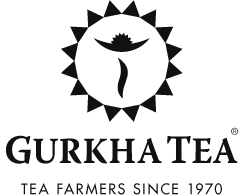History of Nepal Tea

How it started
The start of Nepal tea industry is marked by government backed Ilam Tea Estate founded in 1863 in the district of Ilam by Colonel Gajaraj Singh Thapa, after seeing the growth of neighbouring Darjeeling tea industry.
However, it is believed first tea bushes were actually grown from seeds given as a gift by the Chinese Emperor to the then Prime Minister and de facto ruler of Nepal, Jung Bahadur Rana.
Due to political turmoil and economic policies, the young industry failed to prosper in sharp contrast to neighbouring Darjeeling.
After the period of turmoil, the government opened restrictions for private investment. With the inflow of private capital the fledgling industry saw a period of renewed interest with formation of new plantation such as Bhudhakaran Tea Estate in Jhapa, the first private tea estate in Terai region.
In 1966 the government established Nepal Tea Development Corporation to aid with the development of the new tea industry. After a slow period of growth the first factory was set up in Ilam solely for processing of the tea leaves.
Originally, Nepali tea leaves was being sold to factories in Darjeeling, to meet their rising demands, being a valuable input for the factories in and around Darjeeling.
Few years later another processing plant was open in Soktim, Jhapa.
Slowly, the stagnant Nepal tea industry was evolving into a fully commercialised industry, benefitting the country’s economic and socio- economic development. Furthermore, in 1982, His Majesty, the then King of Nepal, Birendra Bir Bikram Shah Dev, declared five districts-Jhapa, Ilam, Panchthar, Dhankuta and Terhathum as the Tea Zones of Nepal.
From the late 1970s to early 2000s, a range of governmental organization and NGOs became involved with the Nepal tea industry stakeholders, as the tea industry in Nepal also played a significant role in the eradication of poverty, with growth of small holding tea farmers.
Despite its slow growth, the tea industry has matured into an important industry for Nepal, with popularity growing in the international market, and demand rising year on year.



